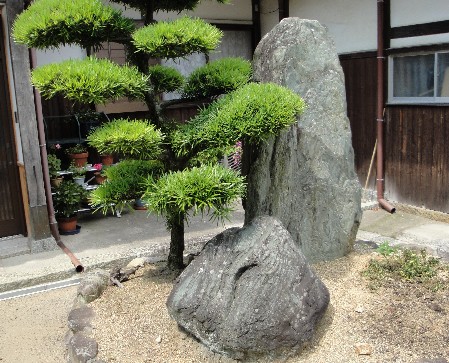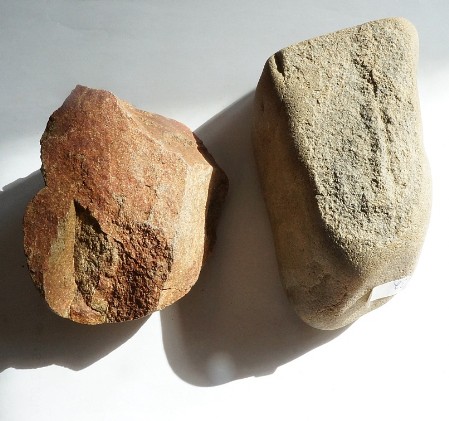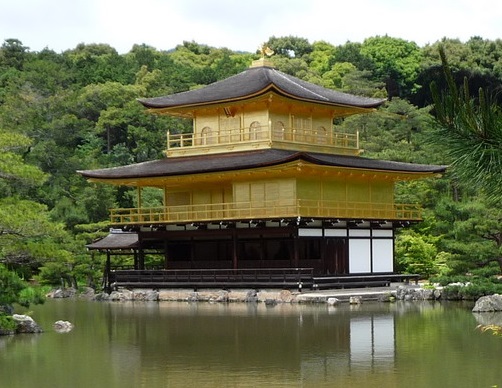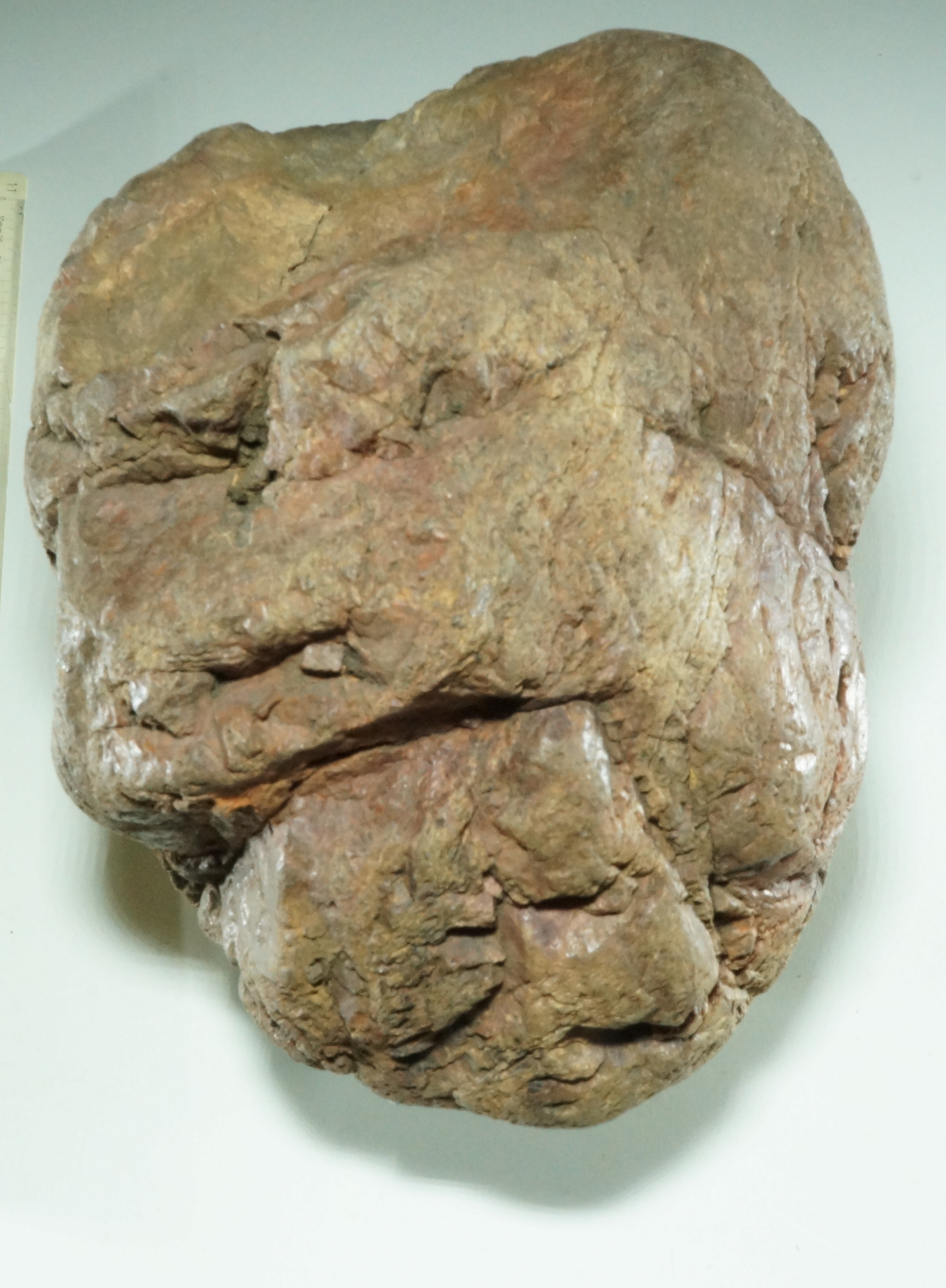Inyoseki
When I held the stone on the left in my hands for the first time, I was initially fascinated by its impressive faces (see). But then I noticed that because of its elongated shape and despite its shortness, it could also easily be seen as a phallus, as a comparison with similar stones that can still be found all over Japan shows (see). What was sensational, however, was that the stone also clearly had a vulva, i.e. also the female counterpart. There were also what looked like testicles and even a clitoris. I could hardly believe it and feared that my imagination had run away with me.
Then a small picture came to my rescue, which I found by chance on the internet in connection with a travel description. It showed the stone on the left, which was supposed to be on the premises of a shrine on Awaji Island. The resemblance to my stone was striking. It is also interesting to note the special significance of Awaji in Japanese creation mythology. It is said to be the first island in the Japanese archipelago to be created by the marriage of the primordial divine couple Izanami and Izanagi (see).
I took advantage of a subsequent stay in Japan to take a tour of the island, where I finally managed to find the shrine.

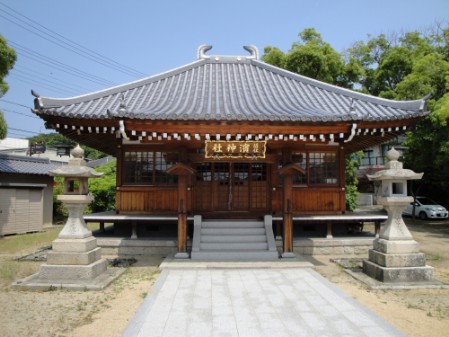
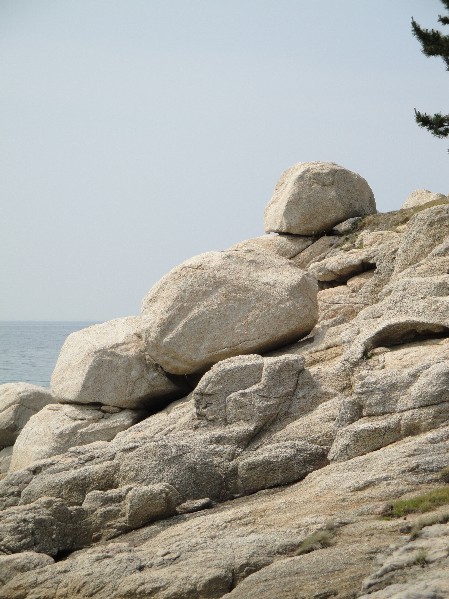
This is the Hama shrine, where the stone in question immediately catches the eye because of its size. On the tablet placed next to the stone in 2008, it is clearly referred to as inyōseki, and in the text also only as inseki, i.e. only the female part, which is the most conspicuous. The stone stood for a long time in front of the house of a wealthy citizen, which was destroyed in the Kobe earthquake of 1995. The stone was then placed in the Hama shrine.
It could be a stone from the nearby coast, as in the photo on the left. As the owner's family had been in the shipping business since the 16th century, they were also able to transport such heavy stones from far away.
The text on the tablet points out that such stones have long been revered, not only on the island but all over Japan, and also links the stone's beneficial effects to the divine couple of the Japanese creation myth.
I think this stone is a good example of how much such a form of stone cult is still alive in Japan today. On the other hand, it helps to understand what the stone I found might have meant to Stone Age people, and it makes clear how far back into the past this tradition goes.
The pair of stones from my site Loc. 32 (photo below left) could also be seen as inyōseki, as the similarity with pairs of stones still venerated as such today shows (see examples below and).
